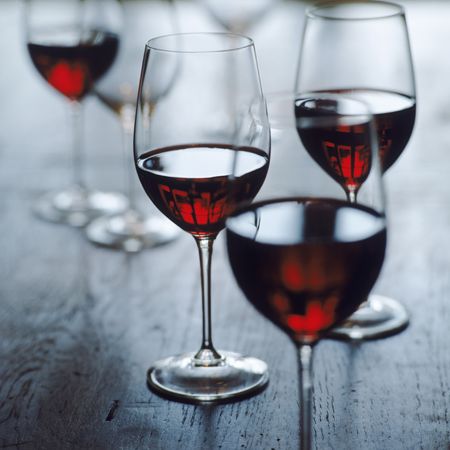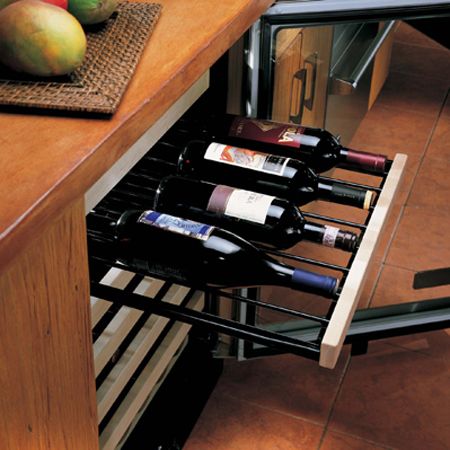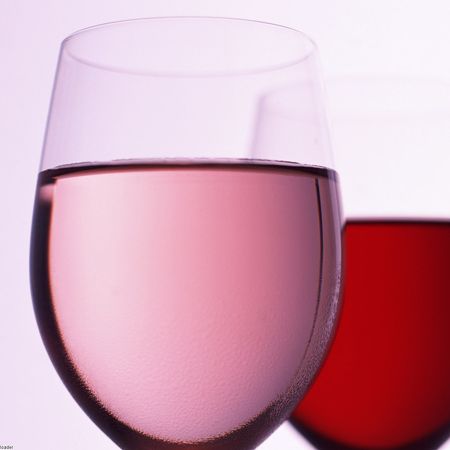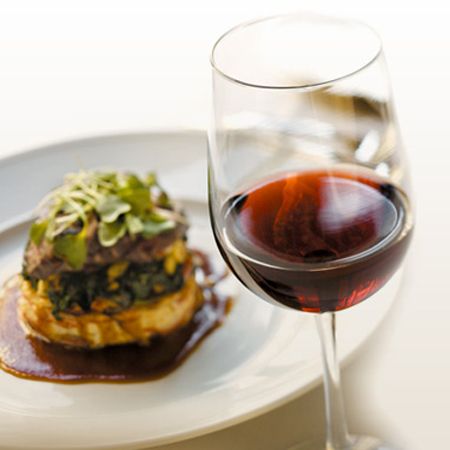Hosting a Wine Tasting at Home

Inviting friends to a wine tasting at home is an informal way to socialize, share some good food and wine, and maybe learn a little something in the process. You don’t need to make it a serious, professional-style tasting with white tablecloths and score sheets unless you want to. All but the most die-hard tasters will appreciate a relaxed approach.
Suggested do’s and don’ts:
From Karen MacNeil, chairman of the Rudd Center for Professional Wine Studies at The Culinary Institute of America at Greystone in St. Helena, California:
- Do ask guests to bring their own wine glasses. It’s perfectly acceptable. Most hosts don’t have three or four dozen stemmed glasses, and if everyone takes their own dirty glasses home, the host’s dishwashing chores are minimized.
- Do ask guests to bring their bottles disguised, wrapped in a brown paper bag. Mark each bag with an identifying letter, such as "A" through "F." Evaluating wine blind, when you don’t know what you’re tasting, keeps you from being influenced by the wine’s reputation.
- Reveal the wines only when everyone has finished tasting and had a say. There are almost always surprises in blind tastings, which is what makes them fun.
- Don’t try to taste too many wines at once. Six to eight bottles is a manageable number. More than that and it’s hard to focus.
- Don’t try to do a stand-up tasting, with the wines arrayed on the kitchen counter or on a buffet. People get distracted and don’t give the wines their due.
- Do set each place with a napkin, a glass of water, and a spit cup. Remember, this is a tasting, not a drinking. You don’t need to swallow the wine to evaluate it, and because you may be tasting each wine several times, it’s a good practice and completely professional to spit.
- Provide pencil and paper for note taking, and put some backup water pitchers and baskets filled with plain bread or plain crackers on the table.
Choosing your theme:
Selecting a theme for your wine tasting gives it direction and makes it more of a learning opportunity. There’s little to be gained from comparing "apples and oranges."
- Your theme could be inspired by a varietal you like (bargain Merlots, for example) or by a region you’d like to know more about (New Zealand Sauvignon Blancs). You could do an around-the-world Chardonnay tasting, assigning each guest a different country. Or maybe you want a sharper focus, tasting Cabernet Sauvignons from different parts of Napa Valley.
- "Part of choosing a theme is choosing a price range," says Karen MacNeil. "You might do Merlots around the world under $30, or Zinfandels from $15 to $20." Specifying a price range helps ensure that you are comparing wines of comparable ambition.
- Choose a red wine theme for your first effort so you don’t have to worry as much about serving temperature. However, even red wines should be at cool room temperature, so make sure they’re not hanging around in a hot kitchen before the tasting.
- If you want to provide all the wines yourself, you can seek the help of local retailers. Tell them your theme and your price range and ask them to suggest six or eight bottles. They can also brown-bag the wines individually for you, so you can taste blind, too.
- Prepare a sheet that guests can take home with them, listing the wines sampled, where you bought them and what they cost.
- Background information can help you understand the wines you’ve tasted. Ask guests to do a little research on the wine they bring so they can make a few comments on it after the wines are revealed. Winery web sites are a good source of material. Many wineries post their reviews (the positive reviews, at least), so you can see how professionals have rated the same wines.
- If you’re tasting wines from, say, California’s Sonoma County, you might want to post a map so guests can see where the different growing regions are.
Should you take notes?
Watching a professional evaluate a wine can be an intimidating, if fascinating, experience. Accomplished tasters find aromas, flavors, attributes and flaws in wine that amateurs often can’t discern. It’s not that such people have more sensitive taste buds or sharper noses. It’s that they’re paying attention.
Taking notes on wine may seem tedious, but it forces you to concentrate and helps you fix an impression, or taste memory, of the wine. If you hope to become a better wine taster, making notes is good exercise. As you develop a wine vocabulary and become familiar with the aromas and flavors that various wines typically offer, your note taking will become easier and more rewarding. "Ah-ha," you’ll say to yourself. "Another grassy Sauvignon Blanc."
Here are some of the features of wine that professionals routinely evaluate. If you like, make a tasting grid for your guests with space to comment on each of these aspects for each wine in the tasting.
- Appearance: Is it bright and clear, not cloudy? Is the color light or intense? Is it appropriate to the wine’s age? (Older red wines tend to develop brown hues; white wines become more golden with age.)
- Aroma: Holding the glass by the stem, swirl it for a few seconds to release the aromas, then hold the wine to your nose. What do you smell? Don’t feel bound by the wine terms you’ve read. Come up with aromas or associations that mean something to you. Many wines have predominantly fruity or floral aromas, but earthy, herbaceous, spicy, woody, or animal-like aromas can also be present.
- Taste: Is the wine tart, flabby (not tart enough), dry, sweet, bitter, or astringent? What flavors come to mind as you taste?
- Body: Does the wine seem thin and light, or rich and full? Is it lightweight on your tongue or viscous? Do you get a "hot" sensation from the alcohol?
- Finish: How long do the flavors linger on your palate? What impression does the wine leave? Is it simple or complex? Is it balanced and pleasing, or does some component stand out?
Sharing results: to rate or to rank?
So your guests have finished tasting and making their notes. Now it’s time to share results. Hearing what others liked and hated, and why, can be the most enlightening part of a tasting
In professional groups, tasters may be asked to rank the wines, putting them in order of most to least favorite. Or they may rate the wines, assigning a numerical value to each, most likely on a 20-point scale.
You and your guests may feel more comfortable with a simpler system.
- Ask each guest to choose a first- and last-place wine and to be prepared to defend his or her selections.
- Someone in the group, not necessarily the host, should be appointed to lead the conversation, drawing out all opinions. It’s almost inevitable that someone’s first-place wine will be someone else’s last, which can make for some lively discussion.Keep in mind that, while some characteristics of wine are verifiable (whether it’s sweet or dry, for example), wine tasting is largely subjective.
- Impressions are always personal and neither right nor wrong. Encourage every guest to participate by making it clear there are no right answers, and be wary of allowing the most experienced taster at the table to become the "expert" whose opinions matter more.
- Offer your guests something to eat, even if it is just a platter of cheese. Those who didn’t swallow the wines will find that they still have imbibed some alcohol, and you want to send them on their way safely.


